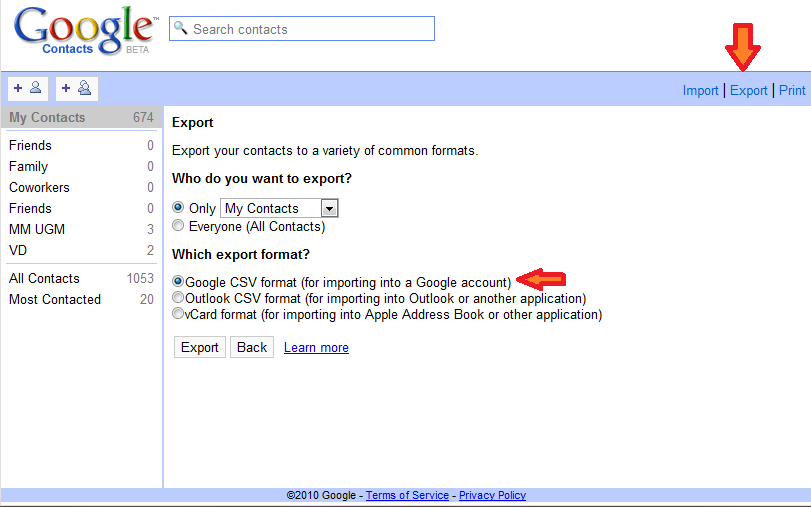Export To Csv File Using Correct

Objectives • Read in a.csv, and explore the arguments of the csv reader. • Write the altered data set to a new.csv, and explore the arguments. The most common way that scientists store data is in Excel spreadsheets. While there are R packages designed to access data from Excel spreadsheets (e.g., gdata, RODBC, XLConnect, xlsx, RExcel), users often find it easier to save their spreadsheets in files (CSV) and then use R’s built in functionality to read and manipulate the data. In this short lesson, we’ll learn how to read data from a.csv and write to a new.csv, and explore the that allow you read and write the data correctly for your needs. Read a.csv and Explore the Arguments Let’s start by opening a.csv file containing information on the speeds at which cars of different colors were clocked in 45 mph zones in the four-corners states ( CarSpeeds.csv). We will use the built in read.csv(.), which reads the data in as a data frame, and assign the data frame to a variable (using.
Color Speed State 1 Blue 32 NewMexico 2 Red 45 Arizona 3 Blue 35 Colorado 4 White 34 Arizona 5 Red 25 Arizona 6 Blue 41 Arizona Changing Delimiters The default delimiter of the read.csv() function is a comma, but you can use other delimiters by supplying the ‘sep’ argument to the function (e.g., typing sep = ';' allows a semi-colon separated file to be correctly imported -see?read.csv() for more information on this and other options for working with different file types). The call above will import the data, but we have not taken advantage of several handy arguments that can be helpful in loading the data in the format we want. Let’s explore some of these arguments. The header Argument The default for read.csv(.) is to set the header argument to TRUE.
This means that the first row of values in the.csv is set as header information (column names). If your data set does not have a header, set the header argument to FALSE. V1 V2 V3 1 Color Speed State Clearly this is not the desired behavior for this data set, but it may be useful if you have a dataset without headers.
Export Data To Csv
The stringsAsFactors Argument This is perhaps the most important argument in read.csv(), particularly if you are working with categorical data. This is because the default behavior of R is to convert character s into factors, which may make it difficult to do such things as replace values. For example, let’s say we find out that the data collector was color blind, and accidentally recorded green cars as being blue. In order to correct the data set, let’s replace ‘Blue’ with ‘Green’ in the $Color column. [1] 'Green' '1' 'Green' '5' '4' 'Green' 'Green' '2' [9] '5' '4' '4' '5' 'Green' 'Green' '2' '4' [17] 'Green' 'Green' '5' 'Green' 'Green' 'Green' '4' 'Green' [25] '4' '4' '4' '4' '5' 'Green' '4' '5' [33] '2' '4' '2' '2' 'Green' '4' '2' '4' [41] '2' '2' '4' '4' '5' '2' 'Green' '4' [49] '4' '2' '2' '4' '5' '4' 'Green' 'Green' [57] '2' 'Green' '5' '2' '4' 'Green' 'Green' '5' [65] '2' '4' '4' '2' 'Green' '5' 'Green' '4' [73] '5' '5' 'Green' 'Green' 'Green' 'Green' 'Green' '5' [81] '2' 'Green' '5' '2' '2' '4' '4' '5' [89] '5' '5' '5' '4' '4' '4' '5' '2' [97] '5' '2' '2' '5' What happened?!? It looks like ‘Blue’ was replaced with ‘Green’, but every other color was turned into a number (as a character string, given the quote marks before and after).
Professor teaches microsoft office 2007 free download. Set up the Chart of Accounts in Professor Teaches QuickBooks. Click on a Professor Teaches Standard Tutorial Set below to view the course list. Standard Tutorial Sets Professor Teaches Premium Training Series Standard Tutorial Sets are bundles of our most popular courses.
C# Export To Csv
This is because the colors of the cars were loaded as factors, and the factor level was reported following replacement. To see the internal structure, we can use another function, str(). In this case, the dataframe’s internal structure includes the format of each column, which is what we are interested in. Str() will be reviewed a little more in the lesson. [1] '3' 'Ohio' '2' 'Ohio' 'Ohio' 'Ohio' '3' '2' 'Ohio' '2' [11] '4' '4' '4' '4' '4' '3' 'Ohio' '3' 'Ohio' '4' [21] '4' '4' '3' '2' '2' '3' '2' '4' '2' '4' [31] '3' '2' '2' '4' '2' '2' '3' 'Ohio' '4' '2' [41] '2' '3' 'Ohio' '4' 'Ohio' '2' '3' '3' '3' '2' [51] 'Ohio' '4' '4' 'Ohio' '3' '2' '4' '2' '4' '4' [61] '4' '2' '3' '2' '3' '2' '3' 'Ohio' '3' '4' [71] '4' '2' 'Ohio' '4' '2' '2' '2' 'Ohio' '3' 'Ohio' [81] '4' '2' '2' 'Ohio' 'Ohio' 'Ohio' '4' 'Ohio' '4' '4' [91] '4' 'Ohio' 'Ohio' '3' '2' '2' '4' '3' 'Ohio' '4' We can see that $Color column is a character while $State is a factor. Updating Values in a Factor Suppose we want to keep the colors of cars as factors for some other operations we want to perform. Write code for replacing ‘Blue’ with ‘Green’ in the $Color column of the cars dataset without importing the data with stringsAsFactors=FALSE.